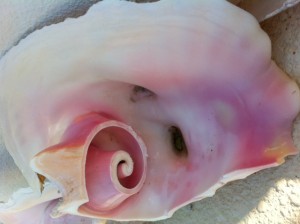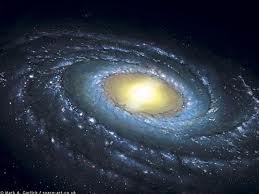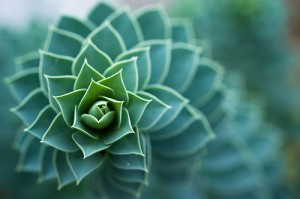It started with my son’s favorite picture book, Math Curse, where I could not get this pattern of numbers:
1, 1, 2, 3, 5 …
And who was this Fibonacci character anyway? I had a feeling that the name was not a random choice.
All of a sudden, I was reminded of my freshmanyear calculus class. The class went uneventfully until the second semester when we did sequences and series.
It seemed very simple at first…
A series is a series.
A series is, informally speaking, the sum of the terms of a sequence. Finite sequences and series have defined first and last terms, whereas infinite sequences and series continue indefinitely. from Wiki Notes
And a sequence is a sequence.
A sequence is an ordered list of objects (or events). Like a set, it contains members (also called elements or terms), and the number of terms (possibly infinite) is called the length of the sequence. Unlike a set, order matters, and exactly the same elements can appear multiple times at different positions in the sequence. A sequence is a discrete function. from Wiki Notes
But when the test came, if I looked at the problem straight on, it looked vaguely like a series. And if I squinted a little, hmmm…. it was now looking like a sequence. I ended up with a D minus on that test. And so when number patterns come up, I get a little panicky.
Then Doodles and Jots did a beautiful post on Fractals and I started to see and understand that math exists in nature. And Imagination Soup’s post caught my eye when she posted her Spiral Investigation.
And so they inspired me. I can do this! Deep breath!
I CAN do a Mathematics of Spirals For Dummies Post. (My mathematics professor father would be so proud.)
A Fibonacci number is a SEQUENCE that is found by adding the two numbers before it together.
0, 1, 1, 2, 3, 5, 8, 13, 21, 34, …
The 2 is found by adding the two numbers before it (1+1)
The 21 is found by adding the two numbers before it (8+13)
The next number in the sequence above would be 55 (21+34)
Can you figure out the next number? Here are a bunch of them.
0, 1, 1, 2, 3, 5, 8, 13, 21, 34, 55, 89, 144, 233, 377, 610, 987, 1597, 2584, 4181, 6765, 10946, 17711, 28657, 46368, 75025, 121393, 196418, 317811, 514229, 832040, 1346269, 2178309, 3524578, 5702887, 9227465, 14930352, 24157817, 39088169
* Is a Sequence a subset of a Series? I am still so confused! We are summing here, so doesn’t this make this series-like? Thank goodness that this is the first time since Freshman year in college that I have to think about sequences versus series though I will probably get an anxiety nightmare tonight (the kind where you have a test tomorrow and you forgot to go to your math class all semester. yeah. hate those!)
And who was Fibonacci anyway?
The “greatest European mathematician of the middle ages”, was Leonardo of Pisa, or Leonardo Pisano in Italian since he was born in Pisa, Italy, the city with the famous Leaning Tower, about 1175 AD.
By the way, don’t confuse Leonardo of Pisa with Leonardo da Vinci! Vinci was just a few miles from Pisa on the way to Florence, but Leonardo da Vinci was born in Vinci in 1452, about 200 years after the death of Leonardo of Pisa (Fibonacci). from Maths Surrey
AND…
Plants illustrate the Fibonacci series in the number of leaves, the arrangement of leaves around the stem, and the positioning of leaves, sections, and seeds. from Golden Number
The Fibonacci number sequence is evident in nature by the pattern which gets bigger and bigger from the center of the spiral as the spiral expands out.

I took those photos myself, but here are some more I found online.
 from Glass and Steel Structure
from Glass and Steel Structure
 found this on Pinterest
found this on Pinterest
Are you seeing patterns in nature now? And can you see the patterns are number patterns? Yay, we both pass! Phew!
Picture Books for Kids About Math in Nature
Patterns Everywhere by Lisa Varchol Perron
Spirals snuggle, safe and tight.
Growing when the time is right.
Center point and moving curve.
Patterns, patterns to observe.
This is a delightful way to explore patterns in nature, a foundational skill for learning and understanding math concepts! Rhyming four-line stanzas are paired with a nonfiction sidebar to further explain the pattern concepts. Colorful photographs showcase the pattern in nature. Spiral plants and animals are explored through a fern unfurling and a seashell. [nonfiction picture book, ages 5 and up]
Math Verse by Jon Scieszka, illustrated by Lane Smith
This is my son’s favorite math picture book. It’s fun, funny, and all about math! He also loves the science version. [picture book, ages 7 and up]
Swirl by Swirl by Joyce Sidman
Nature and swirls are gently introduced in this gorgeous board book. [board book, ages 2 and up]
Blockhead: The Life of Fibonacci by Joseph D’Agnese
Math geniuses are rarely understood or appreciated. Leonardo Fibonacci noticed patterns in nature but his perception was viewed as daydreaming. His discovery of spiral patterns led to his discovery of the Fibonacci Sequence. [picture book, ages 6 and up]
Growing Patterns: Fibonacci Numbers in Nature by Sarah C. Campbell
Fibonacci numbers are in bold display in this picture book that captures the wonder of this number pattern in nature. [picture book, ages 5 and up]
Wings, Waves & Webs: Patterns in Nature by Robin Mitchell Cranfield
Spotting patterns in nature is a great way to understand math concepts because is also a study of patterns. This picture book finds pairings that might not seem obvious but the graphic illustrations show the similarities. Spirals are part of the patterns found in nature. From snail shells to spider webs, to the milky way, it’s fun to spot patterns in nature! [nonfiction picture book, ages 2 and up]
The 14 Fibs of Gregory K. by Greg Pincus
Gregory thinks he has been born into the wrong family. They love math and he doesn’t. Writing is his thing. When his best friend has to move away, he decides that the best way to convince his parents to send him to writing camp with her is to enter their cherished city-wide math competition. Now, he just has to figure out a math project. Fibonacci numbers come to the rescue because there is logic and poetry in their numbers! [chapter book, ages 8 and up]
Arthur Benjamin: The magic of Fibonacci numbers
Here’s a great TED talk on Fibonacci numbers!
Math is logical, functional, and just … awesome. Mathemagician Arthur Benjamin explores hidden properties of that weird and wonderful set of numbers, the Fibonacci series. (And reminds you that mathematics can be inspiring, too!)
Thank you to Christy for her great suggestion of Vi Hart Videos Doodling in Math.
Here’s a great post on Math Mysticism: Is the Hurricane Shape a Fibonacci Spiral?
p.s. Related posts:
Place Value Math for Kids with Books, Game, and Music Video
Our 10 Favorite Math Picture Books
Book Lists with Science and Math Concepts
Summer Math Ideas for Elementary and Middle School
To view any book more closely at Amazon, please click on image of book.
To examine any of the items listed, please click on image of item. As an Amazon Associate, I earn from qualifying purchases.
Follow PragmaticMom’s board Math Fun on Pinterest.
My books:
Food for the Future: Sustainable Farms Around the World
- Junior Library Guild Gold selection
- Selected as one of 100 Outstanding Picture Books of 2023 by dPICTUS and featured at the Bologna Children’s Book Fair
- Starred review from School Library Journal
Amazon / Barefoot Books / Signed or Inscribed by Me
 Amazon / Scholastic / Signed or Inscribed by Me
Amazon / Scholastic / Signed or Inscribed by Me
BEST #OWNVOICES CHILDREN’S BOOKS: My Favorite Diversity Books for Kids Ages 1-12 is a book that I created to highlight books written by authors who share the same marginalized identity as the characters in their books.




























Thank for the link!!!
I love tackling complicated subjects one baby step at a time. My kids really enjoyed Math Curse too – can’t wait to check out Blockhead and growing patterns – thanks!
Hi Ann,
And thank you also for posting on same topic. It’s fun to get everyone’s take! Finally, I understand the math of spirals … it’s not so obvious!
I love the whole math patterns in nature thing. My mind shuts down when I have to think too much about math, but in the natural world it’s wonderful. Math Curse is definitely one of my fav. picture books as well.
Hi Artchoo,
I have to say that I never got math in nature … it was over my head so it was fun to post on spirals to finally understand the connection. Math Curse is a fun book. I am glad that other kids love it too!
I just came by to tell you about Arthur Benjamin, but you found him already. I was watching his longer Mathemagic TED talk on the weekend. Do look out for it, very entertaining and inspires kids to emulate him I believe. If you have an iPad, look out for the new app, Frax, a wonderful way to play with fractals.
Hi Susan,
He’s amazing isn’t he?!!!! I have to say that math was not my favorite subject in school but he makes it so exciting!!!
I’ll get Frax for my son. He loves math and seems to find patterns everywhere!
You should check out the Vi Hart videos Doodling in Math Class. You and your kids would probably enjoy them, and theres at least one about the Fibonacci series.
Hi Christy,
Thanks so much!! Going to check them out right now!!
Hi Christy,
Her videos are awesome. I’m putting the urls here if anyone wants them:
https://www.youtube.com/watch?v=ahXIMUkSXX0
https://www.youtube.com/watch?v=lOIP_Z_-0Hs
https://www.youtube.com/watch?v=14-NdQwKz9w
My son will LOVE these!
nice blog and well written for kids. will recommend to kids of my institute.
Thanks so much for your kind words Mahtab!
Hi there. Wow! This is so fantastic. I stumbled upon your blog when I was searching “Sunflower Seed Spirals” on Google. I was looking for an image for my Facebook business page, and I saw your sunflower with the Fibonacci spiral in the center. Of course, like everyone else whose commented here, I am also so in awe of this amazing pattern found everywhere in nature. I even have a small spiral tattoo on my right ankle. 🙂 Thank you for blogging about this! It will be helpful to have books to refer my children to on this fascinating subject.
As an aside…I recently learned Facebook does not allow business pages to use images from Google as cover photos. I am wondering where you found this image and if it is your original image, if you would mind me using it. I am a psychotherapist and wanted to have it as a cover photo because I think it’s a beautiful representation of the simultaneous journey inward, and constant expansion we all make as human beings.
I’m really anticipating your response, so I hope you get this note! Thank you again for sharing/blogging! ~Elena Schreiber
Hi Elena,
It’s not my image so I’m sorry but I am unable to give you permission to use it.
Oh, okay! Thank you so much for getting back to me. Do you mind pointing me in the direction of where you found it? Thank you for your help!